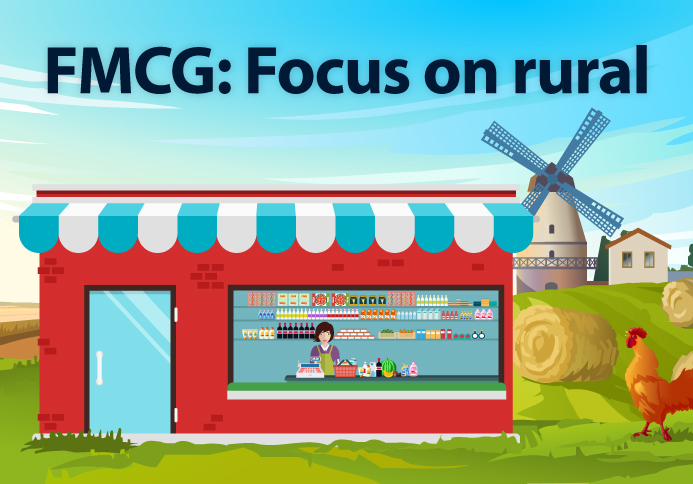FMCG sector: Rural India’s role to increase
HDFC, Tester
Revenue growth in the Rs 3.4 lakh crore fast-moving consumer goods (FMCG) sector is expected to increase by 300-400 basis points (bps) to ~11-12% in FY19 from ~8% in FY18, driven by a revival in rural demand and new product launches. This will lead to a significant improvement in the operating performance of FMCG companies and also benefit their credit profiles.
Disposable income and demand are two parameters that are expected to rise, following the Government’s decision to increase the minimum support prices (MSP) for crops, more non-agriculture rural employment, and a healthy monsoon. Continual product launches and greater acceptance of Ayurvedic and herbal products are also expected to help.
Rural Segment Growth
Growth in FMCG revenue from the rural segment (~40-45% of FMCG revenue) will improve to 15-16% in FY19, as compared to~10% estimated in FY18. Growth had recovered partially from the 5% range during FY16 and FY17. It was a period that witnessed sluggish rural demand resulting from the weak monsoon, intense competition, and demonetization. On the other hand, growth in revenue from the urban segment is expected to remain steady at 8%.
This information, gathered from a CRISIL report on the FMCG industry, is supported by a report in a financial daily. The report states that Finance Minister Arun Jaitley’s Budget is a big positive for the FMCG industry. This is owing to the fact that it brought with it a number of measures aimed at the betterment of the agricultural segment, an increased focus on rural consumers, and the assurance of doubling farmer’s incomes by 2022.
The sector is recovering from the impact of demonetization and the implementation of the Goods & Services Tax (GST) last year. It is forecasted to deliver fast-track growth going ahead. The report quotes Mr. Sunil Duggal, Chief Executive Officer, Dabur India Limited as saying, “The budget ticks all the right boxes when it comes to fuelling the rural and agrarian economy with a slew of measures, including upfront agriculture focus, and institutional support for price discovery. These measures, coupled with the health insurance programme and massive spending on rural infrastructure, will boost consumerism in the hinterland.”
Though there is expected to be increased contribution from rural India to the growth of the sector, mid and large-cap companies are expected to continue to be forerunners in the FMCG story.
Firm Trend
”Going forward, we expect the positive trend in credit ratio to sustain for large and mid-sized firms, driven by improving business profiles,” said Mr. Amit Bhave, Director, CRISIL Ratings. “Also, healthy cash generation and prudent working capital management, along with deep pockets, will allow for higher spends on acquisitions.”
Operating profitability of large and mid-sized FMCG firms is expected to sustain at healthy double-digit levels. Rising costs and higher promotional spends will largely be offset by savings on logistics, transportation and from supply-chain efficiencies.
On the other hand, competitive intensity and regulations will continue to crimp small companies, resulting in thin profitability, according to the report.
The possibility of acquisitions is not ruled out. “Given the prospects, we see large and mid-sized FMCG firms augmenting growth through two flanks: new launches and acquisitions,” said Mr. Anuj Sethi, Senior Director, CRISIL Ratings. “Small regional players with established brands are likely to be acquired by larger peers – even if such deals are expensive – to reduce time to market.”
Related Posts
Don't miss another Article
Subscribe to our blog for free and get regular updates right into your inbox.
Categories
newsletter
 HSL Mobile App
HSL Mobile App 



